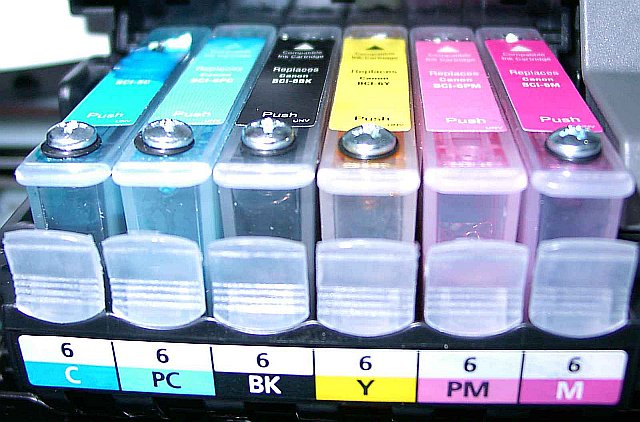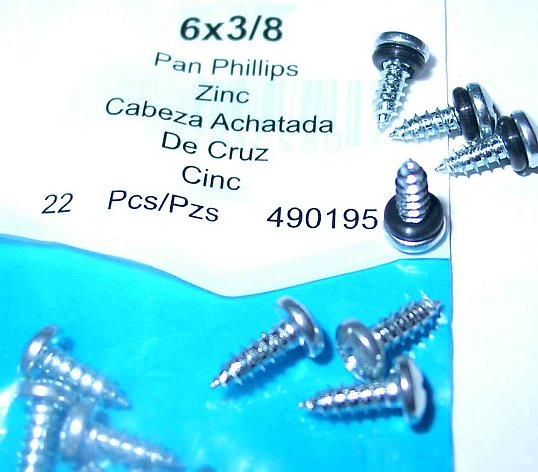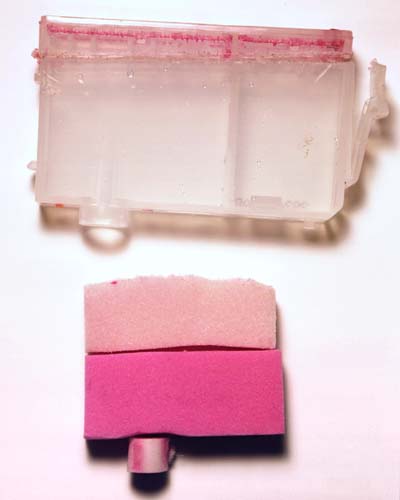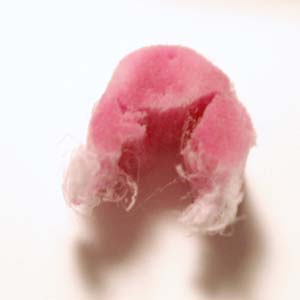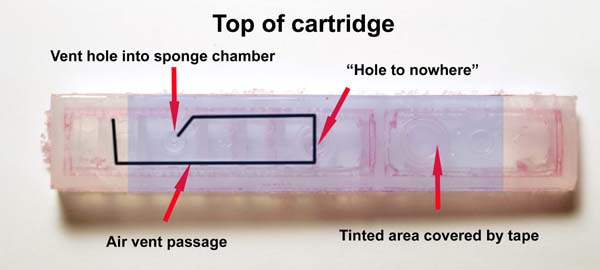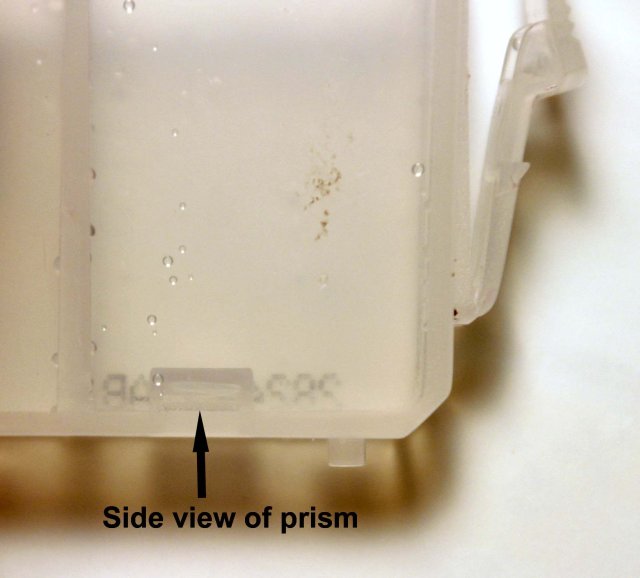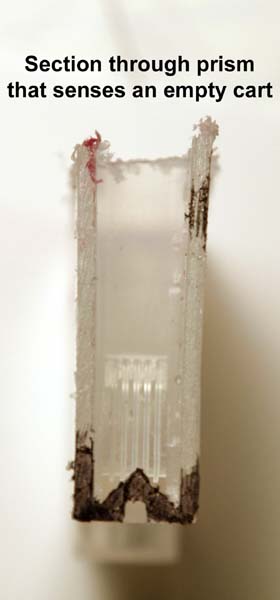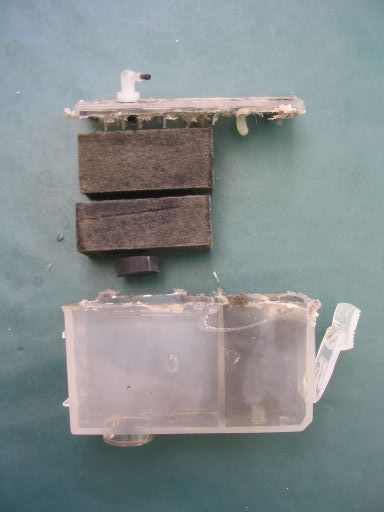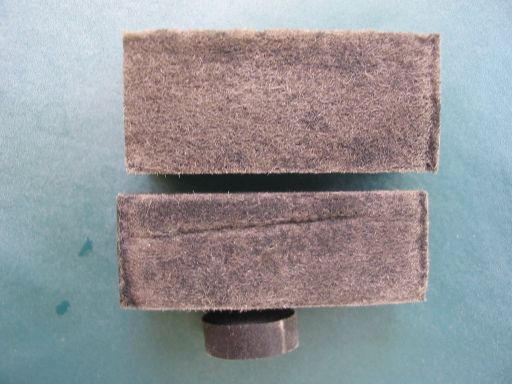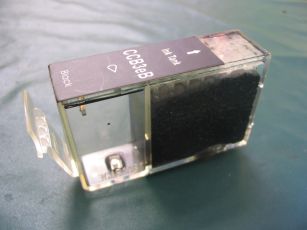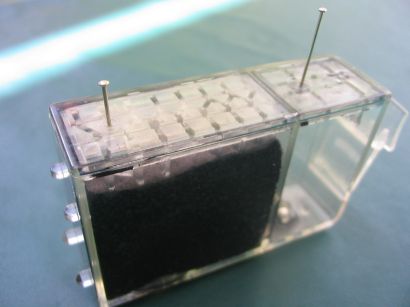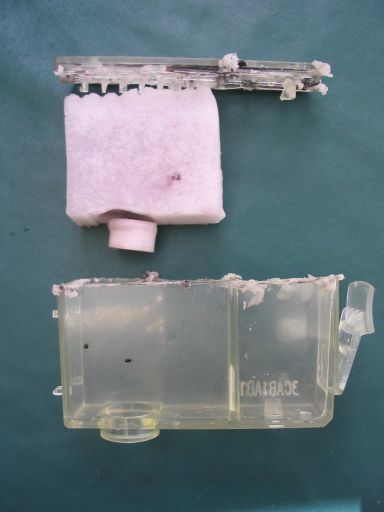- Joined
- Feb 24, 2005
- Messages
- 1,669
- Reaction score
- 183
- Points
- 223
- Location
- North of Boston, USA
- Printer Model
- Canon i9900 (plus 5 spares)
Because it is cost prohibitive to manufacture the print head and carts to such precise tolerances that the filter (the small cylindrical part that is about 8 mm in diameter by 8 mm tall) will always be in exactly the right position to "just touch" the ink pickup in the print head, they are apparently designed so that the bottom of the filter is always a little lower than the top of the print head's pickup when a cart is inserted into the print head. The filter is then forced to float up, compressing and giving good contact with the sponge
Ideally, when a cart is removed from the print head, the sponge will have enough force to push the filter back down to its original position (it must be free to "float" back down). If the filter or sponge fit too tightly into the case, there may not be enough force to push the filter or sponge all the way down, and good contact is not assured the next time that the cart is installed. It is doubtful that every manufacturer of replacement carts understands all of the design requirements of these carts and how important it is that the filter remains free to float and that the sponge material is stiff enough to push it back down. How many other design features are there that aren't obvious?
Perhaps I wasn't clear on what I meant by "tapping". I meant exactly what you did when you tapped your cart on the table. As you noted, this forced the filter back down into position. Because it so easy to do and I dont see any downside in doing it, I tap every cart every time that it is installed. If you run low on ink and dont notice it immediately, you may not burn out the print head, but you will probably cook some of the residual ink in the small holes and be in for extended cleaning cycles to clear the problem (an ounce of prevention ).
Ideally, when a cart is removed from the print head, the sponge will have enough force to push the filter back down to its original position (it must be free to "float" back down). If the filter or sponge fit too tightly into the case, there may not be enough force to push the filter or sponge all the way down, and good contact is not assured the next time that the cart is installed. It is doubtful that every manufacturer of replacement carts understands all of the design requirements of these carts and how important it is that the filter remains free to float and that the sponge material is stiff enough to push it back down. How many other design features are there that aren't obvious?
Perhaps I wasn't clear on what I meant by "tapping". I meant exactly what you did when you tapped your cart on the table. As you noted, this forced the filter back down into position. Because it so easy to do and I dont see any downside in doing it, I tap every cart every time that it is installed. If you run low on ink and dont notice it immediately, you may not burn out the print head, but you will probably cook some of the residual ink in the small holes and be in for extended cleaning cycles to clear the problem (an ounce of prevention ).

